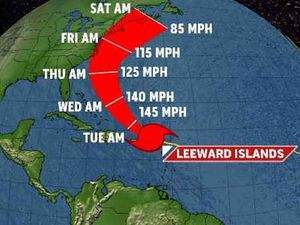 By any measure, the 2010 growing season has been an outstanding one for Long Island grape growers.
By any measure, the 2010 growing season has been an outstanding one for Long Island grape growers.
Across the island, I'm hearing reports from vineyard folks saying that the grapes are anywhere from 10-20 days ahead of schedule.
They're further ahead than in 2007, often lauded as the region's best ever vintage.
In 2010, it's been about more than just hot days — cloud cover and the UV rays they can filter have made an impact too.
Rich Olsen-Harbich, winemaker at Bedell Cellars, told me a few weeks ago "Not only have we been hot and sunny, but the sunny days are clear with a low percentage of cloud cover."
Increased UV exposure — coupled with leaf removal from the fruit zone — means lower levels of methoxypyrazines. Those are the compounds that can give red wines underripe, bell pepper aromas and flavors.
Increased UV can also lead to more TDN in riesling too — think petrol character — but riesling isn't a big player on Long Island.
To illustrate how big an impact UV can have: 2003 — anything but a classic vintage on Long Island — was a very warm one too, according to Olsen-Harbich but there were fewer than 30 "clear days" all season. The vintage suffered and several underripe reds made their way to store shelves.
Despite the great weather we've been enjoying, local growers and winemakers are watching the weather closely this week — not to keep an eye on cloud cover or even temperatures (which are expected to remain in the 90s). Instead, they'll be keeping an eye on Hurricane Earl, which has a predicted path up the eastern seaboard and over the East End of Long Island.
Computer models aren't always reliable, but Hurricane Earl hitting wine country could have dire and serious consequences.
"The effects a H — I can't get myself to say the word —
can have on a vineyard depends on the severity of the 'hit,' the amount of rain that comes with it, and the speed it is traveling," says Rich Pisacano, vineyard manager at Wolffer Estate and co-owner of Roanoke Vineyards, adding "A direct hit can lay down an entire vineyard by snapping poles at the ground, send bird
netting into the next town and of course destroy the crop."
Such devastating damage would require a lot of time and money to remedy, rendering "a complete crop loss the least of the problem" according to Pisacano.
Unfortunately, hurricanes aren't anything new for local grape growers. Powerful named storms have damaged vineyards past, most recently in 1985 and 1991.
"In 1985, when the eye of Hurricane Gloria was over Nassau County," Charles Massoud, co-owner of Paumanok Vineyards remembers, "the
northeast quadrant of the storm was largely a wind event. It broke lots
of trees but it brought lots of spray from the ocean. The salt from the
spray dessicated the leaves and after three days the vineyard was
essentially dead."
Luckily, the Massouds had already picked and sold their chardonnay before the storm hit.
Hurricane Bob, which passed just east of Montauk in 1991, was largely a rain event with strong wind. Massoud told me in an email "That
bruised the fruit as though the clusters were sanded. That was at the
end of August. Those of us who were quick at treating for botrytis
salvaged a decent vintage in spite of the trellis damage from wind. The
bruising developed scabs that increased the phenolics and required
careful treatment at winemaking time."
Luckily, there was plenty of rain to wash away any salt from ocean spray that year.
These types of events are why you can't christen a vintage "the best ever" until the
grapes are into the winery.
There is little doubt that local farmers have the Weather Channel on their televisions today and will all week. That's all they can do though — watch, wait and hope.
(Photo credit: Weather.com)
